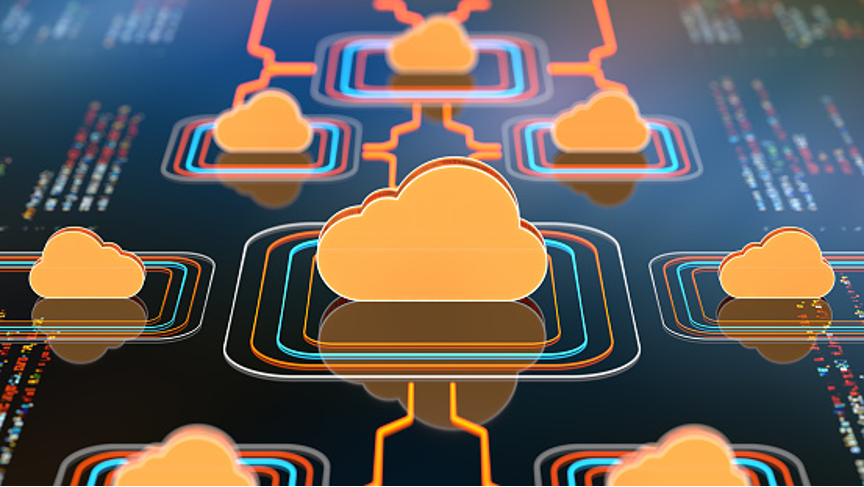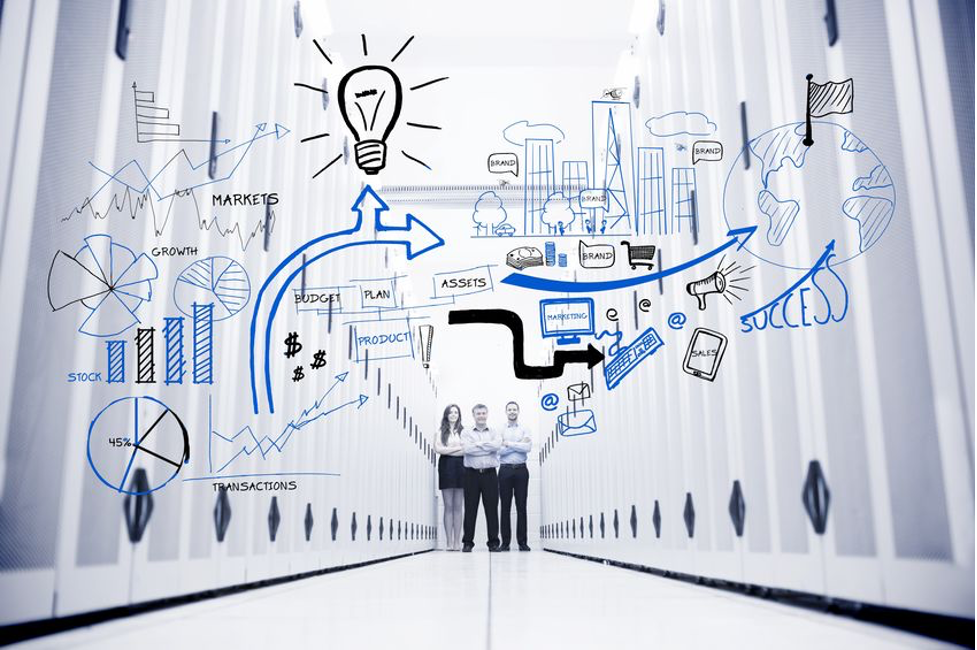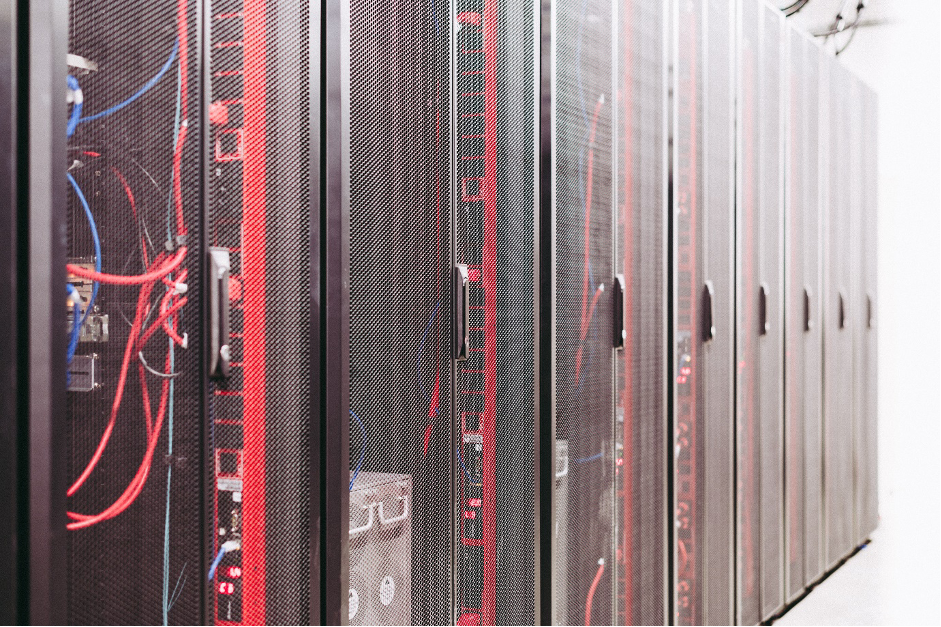In today’s digital world, data centers form the backbone of a business. Depending on the industry you operate in, your business’s success can be determined by the performance of the data center you choose for your company.
More and more companies are now depending on third-party data centers to exploit the benefits of having a well-equipped dedicated space for their IT infrastructure without building an on-premises data center. The global data center colocation market is projected to reach 131.8 billion USD by 2030. Migrating your IT infrastructure to a third-party data center can be one of the best decisions if you do it right.
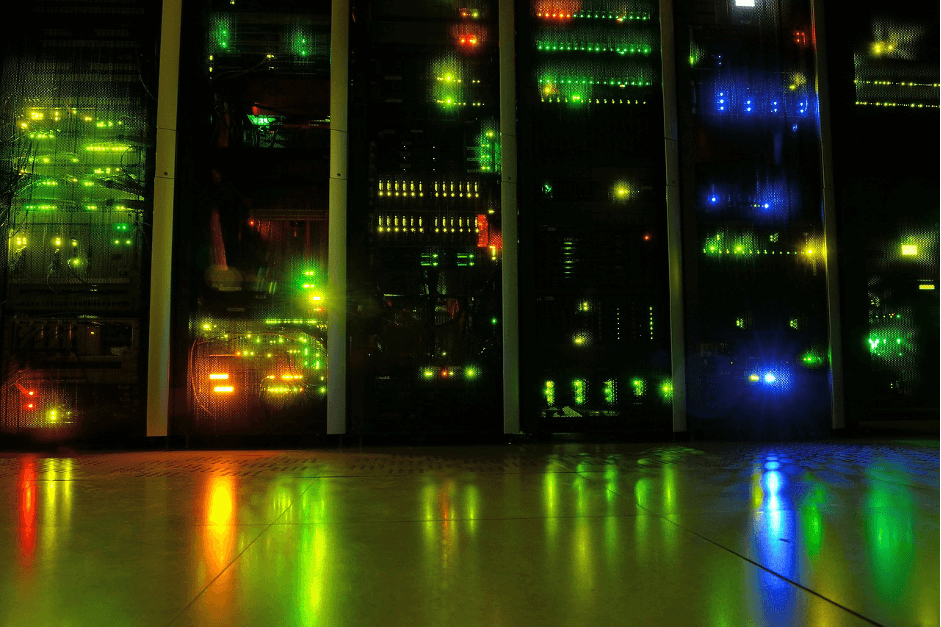
Here are the 5 key considerations you should keep in mind when choosing a colocation data center for your business.
Location
The location is important for several reasons. Don’t choose a colocation facility that is located in a disaster-prone area. Natural disasters such as floods, hurricanes, and forest fires can significantly impact the performance of the data center. You can also face data loss if they do not have a proper disaster recovery plan in place.
Distance between the server and the end-user impacts the user experience. Thus, it is recommended that you host your server in a colocation center located near your end users to minimize latency. Also, choose a data center near your office premises. It will be easier for you and your team to visit the site if your IT equipment needs your attention.
Reliability
Reliability is one of the key considerations when choosing a data center. The reliability essentially means how much uptime it can offer. Power supply, cooling system, and network connectivity are three of the key components that keep a data center running. Make sure it has proper power backup and effective means to control the temperature inside the facility.
If you plan to host mission-critical apps and data, make sure the data center employs redundant infrastructure. It will ensure that capacity or distribution failure will not impact the site’s operation.
Hybrid infrastructure deployment
Make sure it offers you the opportunity to deploy a hybrid IT infrastructure. As the global IT landscape is evolving every day, it is critical to have the flexibility to switch to a hybrid IT model if needed. There are several advantages of availing both cloud and colocation infrastructure from the same service provider. Try to make sure your colocation service provider can offer both.
Network connectivity
Make sure it has access to multiple reliable network paths. Also, go for a colocation center that uses a fiber network. They ensure faster connection and symmetrical speed. Fiber optics is also more cost-effective than the other available options in the market.
Security
Choose a data center that employs a robust security system. Your servers and other hardware need to be fully secure in terms of both cyber security and physical security. The place should have access control so only authorized personnel can enter the facility. Also, make sure it implements state-of-the-art technology to keep the network and server safe. It should also regularly check the vulnerabilities in the system and upgrade the security measures accordingly.
Here, at AiNET, we take a holistic approach to our client’s IT infrastructure needs. Our services include data center colocation, cloud storage, and fiber optics network. When you get all these services under one umbrella, it becomes remarkably easy to plan your IT infrastructure as you need.
In today’s business world, data is at the center of everything we do, from making decisions to allocating resources. Companies with a data-driven culture can collect and analyze data effectively, make better decisions, solve problems more efficiently, and drive better results.

Read on to learn more about what data-driven culture is and explore 3 reasons why it is essential for your business.
What Is Data-Driven Culture?
A data-driven culture is a business philosophy where all decisions are based on empirical evidence, statistics, and logistics obtained from data rather than assumptions or guesses.
In other words, data is used to guide all business decisions, from strategic planning to operational details, where employees can work on shared corporate metrics and enhance the efficiency of the business.
For a company to embrace a data-driven approach, its employees must possess data literacy and the capability to interpret, utilize, and comprehend data.
Why Is Data-Driven Culture Important for Businesses?
Among the many benefits of a data-driven culture, the following three stand out:
1. Increased Efficiency and Productivity
A data-driven culture increases efficiency and productivity. When everyone in the company has access to data and can use it to inform their work, it eliminates the need for wasteful meetings and inefficient processes. Moreover, being data-centric can help companies improve their operations, communication, and overall performance.
2. Improved Customer Experience and Engagement
Customer experience and engagement are two of the most critical metrics for any business. A data-driven culture is essential for improving both of these metrics. Your company can create a more efficient and effective organization by making data-driven decisions. Hence, you can better meet the customer’s needs, leading to more engaged and loyal customers.
Data can be used to improve CX in several ways, such as in the:
- Identifying customer needs and pain points.
- Improving communication and customer service,
- Developing targeted marketing campaigns.
Moreover, it can increase sales, customer retention, and brand loyalty.
3. Better Business Insights and Decision-Making
Organizations with a data-driven culture can make better business decisions and gain insights because they have a data foundation to support their decision-making.
They drive their business forward and look for ways to collect and analyze data to improve their understanding of their business and customers.
Conclusion: Embrace a Data-Driven Culture With AiNET!
An organization’s culture directly impacts its ability to succeed in the marketplace. How employees interact with customers, clients, and each other can determine whether they succeed or fail. Therefore, a data-driven culture leads to a more successful organization. To improve your organization, consider making this culture a priority.
AiNET is a data-driven company. At AiNET, we understand the importance of reliable and accurate data services for businesses and individuals. That’s why we strive to offer the best data services. Our team of professionals is dedicated to providing high-quality data solutions that meet every one of our clients’ unique needs.
Whether you’re looking for data management, data analysis, or data visualization, we have the tools and expertise to help you succeed. So if you need top-notch data services, look no further than AiNET.
Cloud computing has integrated into the business world like crazy, thanks to its ability to simplify business processes and data management. As cloud services become increasingly popular, technology constantly brings new options to the table. Two of them are serverless (Function as a service (FaaS)) and containers (Container Orchestration). But which one of them has the upper hand in serving the business’s needs? This question initiated the battle of serverless vs. containers cloud services.
To settle the competition, this guide will walk you through the main dissimilarities between serverless vs. containers. Hence, you can decide which one you should use for your business to meet your end goals. Let’s dig in!
Serverless vs. Container Cloud: Primary Difference
| Point of Difference | Serverless Cloud | Container Cloud |
| Supported Hosting | Public cloud-based services mostly support the serverless cloud. | Linux and some versions of Windows support container cloud. |
| Dependency | Needs to connect to a public cloud server. Ai.NET provides public cloud services to more than 30% of global traffic flow. | It can create an on-premises private network. Although public cloud frameworks are present, they are not widely used. |
| Costs | It depends on the subscription package of the public cloud service provider. Ai.NET provides affordable packages and hosts 1,000,000+ servers. | Since containers engines are open source, no subscription cost is involved. You have to pay once to get it installed. Afterward, you only have to pay for maintenance. |
| Availability | Requires a few seconds to minutes to complete their task before shutting down. | Available all the time. |
| Supported Languages | Limited languages are available from the provider. | Can support any language that suits the company’s needs. |
| Customization | Have to select from the available options only. | Has more freedom for customization. |
| Isolate Workload | Yes | Yes |
Which One Is Better For You?
Serverless Cloud Services
The CAGR (Compound Annual Growth Rate) of serverless cloud computing increases rapidly. It is estimated to hit a healthy CAGR of over 23.17% by 2026.
The serverless cloud can be a better choice for your business in these conditions:
- Suppose you need a cloud for a specific function for a short time. Like you want to run code to add your logo whenever someone uploads a picture.
- You have limited cloud usage that your subscription can easily cover.
Container Cloud Services
Companies worldwide claim that containerization plays a strategic role in their business. Container cloud services can serve you well too if:
- You want to move data quickly between servers.
- You have enough space to install and maintain the container.
- You want to switch between on-premises and the public cloud easily.
Serverless vs. Containers: Combined, They Serve The Best!
Several companies use serverless vs. containers cloud services together— and for all good reasons!
If the public server suffers an outage, a company can switch to its container server. Similarly, it is easier to save vulnerable information on containers while using the serverless cloud for supplementary tasks. It will divide the burden of the former cloud saving you cost and energy.
All in all, serverless and containers come with their relative pros and cons, and they can complement each other’s deficiencies when combined! To cater to your data maintenance needs, AiNET brings you unmatched cloud services. Whether it’s public, private, hybrid cloud storage, or dedicated data centers, you get it all in one place at affordable packages.
With the digital economy rapidly taking over the world and innovative technologies easing up the IT department’s processes, businesses are having no difficulties in their transitioning phase. With data centers providing many beneficial factors, it has become a necessity for businesses to join the new trend. Companies no longer have room to decide whether or not to adapt working with data centers, it has become a must. Which is why, today, we will talk about data center modernization.
With the ability to become more personalized with your customers and give them a better satisfactory experience, you can see how businesses are running to data centers and adapting it to their workflow.
However, adjusting to data centers isn’t enough anymore. Given the rapid developments of the different data center tools, keeping up with the updated software is the real deal. This brings us to the subject of data center modernization. The different updates do not only impact the performance but also the management and security levels of the service.
What do we mean exactly by data center modernization?
A modernized data center means modernized infrastructure. Data centers that do not try to keep up with the changes only risk to fall behind and become somewhat irrelevant after some time. On top of it all, a modernized data center means a cost-effective data center. Since it provides scalable and secure hardware, it leaves no option for hidden costs. Data center modernization means giving the organization better opportunity to handle their data in a much better way i.e., knowing what goes where. With the digital age, transforming your data center and adapting to it is a relatively easy step.
After all, with the rapid changes, a traditional data center can no longer keep up.
Why should you modernize your data center?
Modernizing data center includes:
- Updating your cloud in order to support any future evolutions. Updating your cloud means working with a software that has the ability to expand.
- Efficient operation and faster infrastructure. Modernized data centers have the ability to quickly adapt to new technologies, operate efficiently and effectively and —
- Virtualized and ready to scale up or down depending on the demand. With the proper flexibility, modernized data centers satisfy their customers on a whole new level.
- Built in security that helps you and the customers protect their data, software, applications and infrastructure.
- Rapid development and unified management with the ability to use new and existing skills and tools.
If you’d like to learn more, AiNET is the place for you! Check out our blogs and enjoy.
There are many things to talk about when explaining how data centers work. We can spend a day talking about how they came to life and their history, the way they operate and the way things are handled inside, the benefits they provide to anyone who wants to use it, and we can even talk about the different architectural styles of data centers found in the world. Believe it or not, we already have talked about most of these subjects. And yes, you can take a look at them whenever you need to. All you have to do is to head towards our website AiNET and just enjoy.
Today, we will be explaining what “the hot spot” and “the cold spot” means when it comes to data centers.

The Cold and Hot Spot of Data centers.
It is a known fact that computer rooms have always been kept cold. However, there are a number of factors for that. For example, cooling the area helps prohibit the expensive equipment from overheating. This is considered an extremely crucial step to a level that as a rule. It is important to increase the temperature with the increase of servers.
Another factor is related to the cost of the power used. Historically, the power cost was a very small proportion of the cost to run a data center (we can’t say the same for the current days.)
Not keeping your equipment in the right temperature level can result in serious risks such as:
- Your servers stop performing at their peak or, even worse, stop from responding at all.
- Your server reliability will be reduced.
- Increased data loss.
When constructing a data center, you have to consider the best options to ensure efficiency from it being the hot and cold aisle. The first step is to learn the difference between the two.
So, what is “the cold spot”?
As we mentioned above, data centers produce a lot of heat, and now that we know why overheating is risky, we know why it is always on top of the minds of data center operators. Traditionally, there are 2 ways that data centers are cooled down and protected:
- Air conditioning
- Specific server rack layout
The latter being – the colder sides of the servers facing each other creating the colder aisle (facing the air conditioner output ducts) and the hotter sides of the server doing the same (however, facing the air conditioner return ducts), creating the hotter aisle.

The cold spot, exactly as the name entails, is where the temperature is cold, due to excessive cooling, whereas the hot spot is when the temperature is too hot. Both are serious issues and should be immediately checked to neglect any damage from being done.
For cold spots, condensation may form resulting in the accumulation of water in a location which may damage the equipment found. Similarly, the discovery of a hot spot should be followed by detailed checkup to address the condition.
We all know you want to learn more. Don’t worry, we got you covered. Visit AiNET for more blogs!
No matter the size of your company, the amount of your data increases daily. Whether we are talking about sensitive information or data about customers and legal files and folders, the way you store those files matters more than you know.
Data center architecture has many different benefits which is why many pay attention to the design.
-Did you know that there is even an award called DCD which is short for Data Center Architecture Award? It inspires architects to take one step forward and set new beauty standards for data centers.
We all know when talking about data centers, “beauty” isn’t the word that comes to mind. Data centers are mostly associated with wires, cooling systems, software, equipment… you get my point. However, today we will change that. In this blog, you will find out about the world’s strangest yet most beautiful data centers.
Ashton Old Baths

Starting with the winner of the 2021 SCS award. This data center is known as Ashton Old Baths and can be found in the United Kingdom.
From an abandoned Victorian bath house into one of the most beautiful data centers. It caught the eye and the vote of more than 4,000 people. The Architect, Tameside Council, informed everyone that this data center was invented for both small and medium-sized businesses.
Including an impressive range of workspaces private enough to give space of creativity, this data center left many in awe.
AiNET’s One Market Center

AiNET’s One Market Center (AKA the Hultzler’s building) cannot be ignored. In addition to having 25% of the world’s internet traffic pass through it, architecturally, it is an amazingly designed building. I mean it’s not surprising. In addition to what once was the place to shop to find the most fashionable clothes on the east coast of USA, you can now shop digitally.
AiNET has now expanded the building to much more than what it originally, such as data center, IT services, cloud storage and even cyber security business. Believe it or not, this beauty has been thriving since the 1850s!
Building Altar-ations

No, the picture you’re looking at is not some fancy hotel or a modern museum.
A 19th century church turned into a supercomputing center, this data center is found in Barcelona and opened in 2005. What was once known as the Torre Girona is now knowns as one of Europe’s largest supercomputing centers with its luxurious style and expensive hall.
There was a time when the above data center was considered to be one of the world’s fastest machine-holding data centers. Although it is not considered such now, it still holds the place of one of the most beautiful data centers found.
Sounds interesting? Well, AiNET has more blogs that you might love! Visit us for more and you’ll see it for yourself.
More and more businesses are shifting their IT ecosystem off-premises. It is cost-effective, reliable, and scalable. Third-party data centers offer everything you need to run your system seamlessly at a much-reduced cost. These data centers may take various approaches and come in many shapes and sizes. Therefore, we can categorize data centers into two types: retail colocation and wholesale data center. These two types of colocations differ in size, space, power, and cost structure. Read on to know more about the two types, their benefits, and use cases.

What is Retail Colocation?
To start with, retail colocations are primarily suitable for smaller deployments such as the IT infrastructure of a start-up or a small business. These colocation centers offer some or all services required for the smooth running of the entire IT infrastructure.
What is a Wholesale data center?
Traditionally, wholesale data centers were made for large enterprises, government agencies, and service providers with significantly high footprint requirements. Here, the colocation facility offers space and power. The client company brings all the other things, including cloud connectivity, hardware, and IT experts.
Difference between retail colocation and wholesale data center
The followings are the four key areas where the two models of colocation differ.
Power
Firstly, the amount of power is one of the key differentiators between the two types. Usually, power deployment that crosses the threshold of 100kW is considered wholesale. However, this threshold is not standard. Depending on the geographical location or at the discretion of the data center, the upper limit for retail colocation can be as high as 1MW.
Space and hardware
Secondly, in wholesale colocation, the clients are often provided with a cage or sometimes a customized space specially designed for their needs. In retail settings, the client rents a rack space or cabinet. Usually, anything under 10 rack space is considered retail colocation.
Wholesale clients bring their whole setup, and they are responsible for taking care of them. Whereas in a retail facility, the colocation provider often acquires the required hardware on behalf of the client and deploys them in the facility. They offer managed services, including IT support.
Connectivity
In addition, a retail colocation facility usually offers internet connections of their choosing. The clients have little choice but to use the service of the telecom carrier that has
a tie-up with the colocation center. Wholesale colocation facilities may or may not offer network connections. Typically, in a wholesale setting, the client has the freedom to choose the telecom carrier and ISP.
Cost
Last but not least, retail colocation facilities offer packages at a flat rate. In addition, the package includes rack space, power, internet connection, IT support, and other services. Customers can choose from different packages and pay a monthly fee. The cost structure for wholesale colocation can be a little more complicated. The client pays the monthly rent for the space, and the charge for the power is metered. The client pays the bill based on per unit used during the month. Sometimes, there can be a minimal bill for a fixed amount of power, and the client needs to pay extra if they cross the threshold.
In conclusion, at AiNET, we offer both retail as well as wholesale colocation services. Therefore, visit Ai.Net or shoot us a message. We will guide you through the entire process and help you choose the best solution for your business.
Organizations work better when working on strategies, especially if they are efficient. One strategy is data center consolidation, also known as “IT consolidation”.
In this blog, we will talk about what data center consolidation is, its benefits and, the steps and when we think is a good time to think about consolidation.
What is data center consolidation?
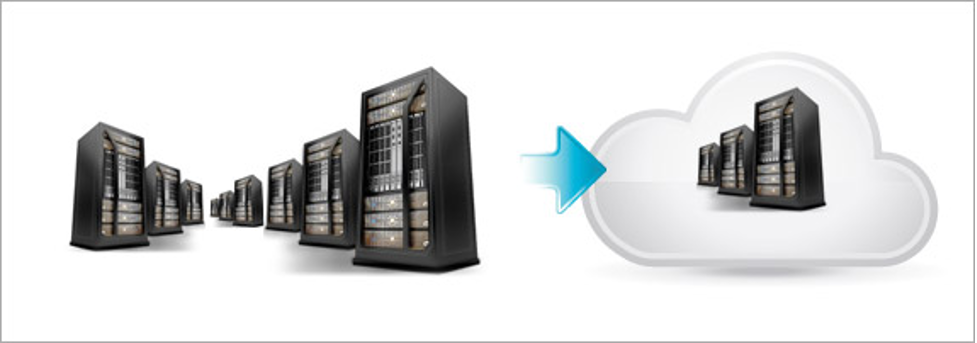
As we mentioned above, data center consolidation, which also goes by IT consolidation, signifies the strategies that provides a better and more efficient IT architecture for your organization. By efficient, we mean both:
- In a physical sense, consolidating multiple data centers together.
- Organizing in a way where a single large data center runs on fewer resources in a more effective way.
By consolidating, you are simply improving your entire IT system, focusing on improving the data storage resources and building better systems.
The benefits of data center consolidation

Data center consolidation has one main purpose, and that is to decrease the costs while improving performance, security and efficiency. If you look at the statistics, there’s a reason behind the growing trend of data center consolidation. Let’s take a look at the benefits which helped data center consolidation to become the next big thing:
Less cost: Consolidating results in reducing costs. Let me tell you why!
When reducing multiple locations, their operational expenses will also reduce. Therefore resulting in lower energy consumption, lower maintenance cost and even lower rent cost.
Consolidating also results to lower software licensing cost since fewer systems are used.
Better security: Data centers with no or little security always end up ignored and even forgotten. Consolidating a data center provides security improvements and in many different ways.
Given the reduction of the multiple physical locations, you will have less area to cover which will help you in reducing weaknesses. You will also have a smaller number of programs and systems to secure thus making your security level higher.
Less errors: Data center consolidation simplifies the processes, and with simplification comes less errors. Instead, consolidating will result in productivity improvement, redundance improvement, better flexibility and better IT asset usage.
What are the steps needed?

Before getting into the steps, it is important to know that data center consolidation affects every single department in the organization. When executed improperly, it comes with high risks, which is why it is important to carefully implement it.
The steps for data center consolidation are:
- Planning
Planning starts with knowing the exact map of your current environment and evaluating the current equipment. You have to take into consideration that these evaluations will be the blueprint of your future plans. After a proper evaluation is done, it is time to plan out both present and future needs.
Note to self: Always make sure you plan a disaster recovery system.
2. Designing
Now that you have planned, you are ready to set up the architecture process. Do not worry, you don’t have to come up with a brand-new data center blueprint. Instead, you can use a referenced design which can help you save time and money. No referenced design meets your needs? No worries, you can always alter in and make your data center the best fit for you.
3. Building
After all the effort and time, you put into planning and designing, it is time to build. You might need architects and contractors, project management and energy consultants, legal and real estate counsels, data center specialists and so on.
However, this is not the end. During the construction process, the team should continue the monitoring process and ensuring that the expectations are met.
AiNET has more blogs for you, all you have to do it just click on our link and it will guide you to the land of blogs about data center.



